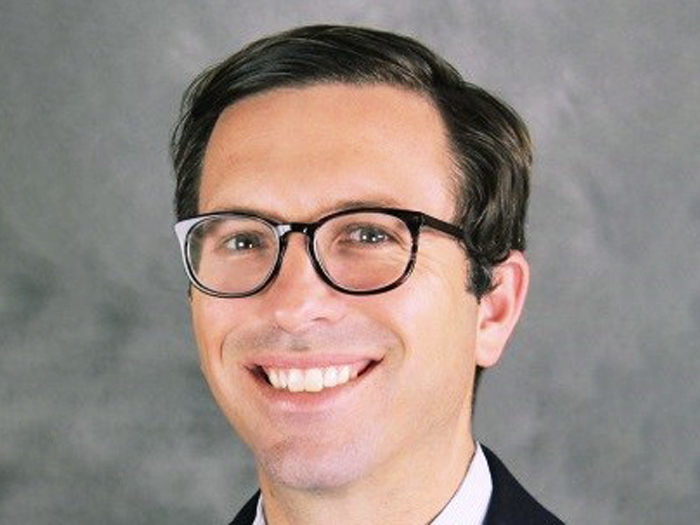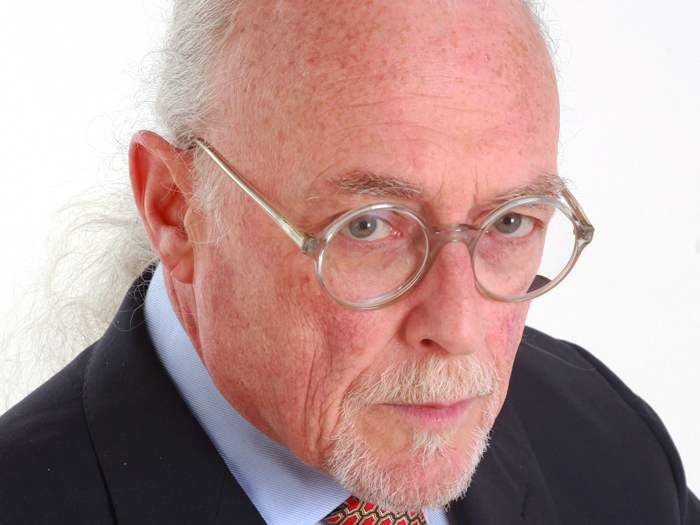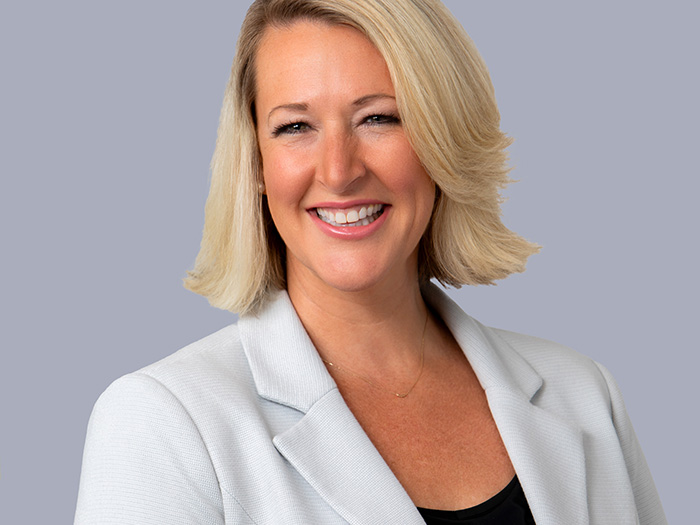13 Questions for Aon’s Timothy Fletcher

During this year’s RISKWORLD in Atlanta, Risk & Insurance®’s editor-in-chief Dan Reynolds sat down with Tim Fletcher, CEO, Financial Services Group, for Aon in the U.S. What follows is a transcript of that discussion, edited for length and clarity.
Risk & Insurance: How did you get your start in the insurance industry?
Tim Fletcher: It was in 2003. There were not a lot of jobs out there, and I was fortunate that people in my network were willing to pass my résumé around. Brian Wanat, who’s now our chief broking officer, hired me while he was running the financial services team. I figured I’d be here for three years. Now, it’s been almost 20.
I was initially focused on D&O for public companies, and I spent the first 10 years in New York working on various teams and large accounts. Then, 10 years ago, I moved to Los Angeles to run our team there. My role expanded to run the Western region in financial lines, and about 18 months ago, I became responsible for the U.S.
I went to business school from ’08 to ’10 while working. Throughout my career, there have been moments when I have thought about leaving financial lines to try something different, but I’ve always stayed. I can’t believe it’s been 20 years.
R&I: We’re talking strictly D&O?
TF: D&O, fiduciary, employment practices and crime, which make up the financial lines.
R&I: There’s a lot going on with employment practices. The work environment has changed so much. What are you seeing just coming down the pipe in terms of possible claims there?
TF: Top areas include return-to-work; biometrics; wage and hour issues; and diversity, equity and inclusion. I’m super sympathetic to the type of risks insurance companies are facing within each of these buckets, particularly in certain states.
You see large settlements on single-plaintiff cases in California that are in the seven- or eight-figure zone. I think that’s an area where it’s been pretty stable on the premiums and the capacity. Areas where we are seeing increases in claims also have lower margins for insurers and are tough to write. And I think, with all those issues I outlined continuing to be at the forefront, you certainly could see more litigation.
Another topic top of mind is layoffs we are seeing in certain sectors. In this environment, layoffs don’t necessarily equal claims, but it does equal increased exposure. How do you manage that process? There’s age, gender — all those factors can lead to something.
R&I: If we do see an economic downturn, is that typically a very active time when we get layoffs and firings?
TF: I was on a panel [at RISKWORLD] yesterday talking about the banking crisis in the context of a possible recession.
One of the insurers mentioned that during downturns and higher unemployment, you actually see more fidelity crime claims for employee dishonesty. They see that more when unemployment goes up.
R&I: So given that there’s plenty of volatility, plenty of change, plenty of exposures opening up, what’s the conversation been like around risk mitigation?
TF: Most of my time lately has been talking to teams and boards on the evolving risk environment for companies. There are all these emerging exposures for management teams, like risks posed by AI, interest rate risk, supply chain risk and geopolitical risk.
From my perspective, what really resonates with both insurers and clients is getting back to basics on governance controls, compliance and having seasoned management teams. There’s no panacea to any of these risks. But we stress the importance of actually having a robust framework to manage your company in a volatile, risky environment.
We encourage clients to have a framework to gut-check and pivot away from when needed, versus being a bit stubborn or focused on just one goal. Managing these risks in a balanced, more flexible framework with seasoned management teams is what we talk to clients about: mitigating potential major litigation.
R&I: What might make this more difficult is “the gray tsunami” — baby boomers retiring — and we’re talking about the importance of seasoned management teams. It’s hard to keep those together, isn’t it?
TF: I think, certainly, as you see management teams with a lack of experience in some of these newly public companies, and there’s a high demand for CFOs and finance professionals who have taken a company public in the ’90s or 2000s dot-com booms, there’s a high demand for that seasoned professional. And you see executives stay on for longer periods of time because not everybody has that experience.
R&I: You mentioned D&O lines in terms of premium and capacity. Would you say that it’s a pretty stable environment?
TF: It’s funny. I would say yes and no.
D&O capacity has drastically increased over the last 18 months due to a lot of new entrants. So, supply of capital has increased, which is now putting pressure on prices downward. Our recent D&O pricing index showed D&O pricing for public companies down about 20+%. That’s a pretty big difference from last year, when it was up.
That increase in supply has put pressure on prices.
Now, outside of public D&O, on the other products I mentioned, including private, it is definitely more stable.
Public D&O gets a lot of the headlines. It’s a large portion of the premium, but it’s not the be-all, end-all. The other lines, globally, are a bit more stable, but public D&O is certainly more volatile. You saw increases in 2021, some stability early 2022, and then it started to accelerate. So when I saw a 24% dip yesterday, I took note of that.
R&I: When you look at the work you’re doing, where do you see your best business opportunities?
TF: All the carriers have growth goals. Our job is really to be a distribution platform for certain carriers to get the risks that they want.
So we’re curating the market on behalf of our clients and understanding which insurers like certain risks — which insurers like technology, which ones like manufacturing, which ones like digital assets or crypto, or financial institutions.
From our perspective, we’re working with insurers to understand where their risk appetite is or where they’re leaning in. Where do they want to really focus? And then we make sure we marry that with our client portfolio.
Right now, we don’t have a ton of new buyers entering the market like we did over the past two years. You have a fixed amount of buyers of insurance and certainly more capital, which makes matching these up a clear area of focus. Then for clients, the focus is making sure the policies are relevant to the risks. We are talking about their issues on supply chain and considerations around if there are E&O policies that can cover their supply chain risk.
All these conversations are a bit unique.
This is how we stay relevant to the clients and what they want to buy. Cost is always important, but it’s really the coverage. Does it make sense for how their company is changing over time?
R&I: Did you see COVID give a lot of insureds a “wake-up call” around supply chain visibility and continuity?
TF: I think it gave everybody a wake-up call around the supply chain.
You saw issues with companies that were heavily reliant on Asia and China for their supply chain. You saw some onshoring, and I think you’re seeing more and more of that. Generally, insurers didn’t necessarily appreciate that that could be overly reliant, and that having a flip-on supply chain could lead to litigation.
This was a wake-up call for everybody in the macroeconomy — not only in how big of an issue that can be, but especially the risks if you’re overly reliant on one area or sector. I think that’s an interesting topic.
Banks are another risk the broader industry didn’t think about.
This came to be with firms having one bank that they’re relying on for all of their liquidity, which can create a concentration risk for any company. Whether it be banking or supply chain or a variety of risks, being balanced and a bit more diverse is healthy for all companies.
R&I: When you look at the work you’re doing and your goals, what challenges do you face?
TF: Talent is a problem for the industry, generally. There was a bit of a talent war in the global industry, but certainly in financial lines over the last couple of years. Most brokers and underwriters have ramped up and continue to ramp up. So holding on to our best and brightest is a challenge. Aon does a pretty good job of that.
Second, data’s always tricky. Clients want more data, they want relevant data, to curate data in a way that’s digestible and understandable, and then to translate it into the insights that they want specific to risks is another challenge for us. If we can’t get that right, we’re not serving them in the right way.
R&I: What advice would you give, thinking of a younger person who’s having a look at this industry? What would you tell them about how to get it right and how to build a career?
TF: I had a couple of good mentors who gave me advice over the years, but I’ll tell you a story: We had a broker who was two years in. She got an offer from another broker after two years. We wanted to keep her, and she went home and she talked to her mom, who’s an executive outside the industry, asking, “What should I do?”
Her mother says, “How long have you been at Aon?”
My friend says, “Two years now.”
Her mother says, “You don’t know anything. Put your head down, learn your craft and come back in a few years.”
No one can learn a business in two years. So keep learning. That was her advice to her daughter, and she [listened] and she’s still here.
Over time, compensation will come, but hard work done right and being relevant to clients and trading partners translates over time to success. But you can’t get it overnight. You learn, you grind it out, have people in your corner who you’re learning from.
The other thing that someone told me was to pause every couple years and take an assessment. Are you learning? Is your career developing? Are you bored? Are you getting challenged?
If you’re getting challenged and you’re learning and you have the right people around you, you should never leave. It’s when any of one or two of those things get derailed that you should start to think about it.
From my perspective, I’ve always had challenges, good people supporting me, opportunities for learning, and a feeling that I am being relevant to clients. So that’s kept me here.
R&I: What does loyalty mean to you? How important is it?
TF: Some people say, are you loyal to a fault and should you advocate for yourself more? I look at sports players who have built their careers on one team. I have a lot of respect for that. I have a lot of respect for the hard work.
I was given certain opportunities by Aon, and they’ve treated me right, and I think there’s loyalty that’s built up on both sides.
There’s a lot of value for folks who built something over time at the same company or firm — and I really respect that. &










